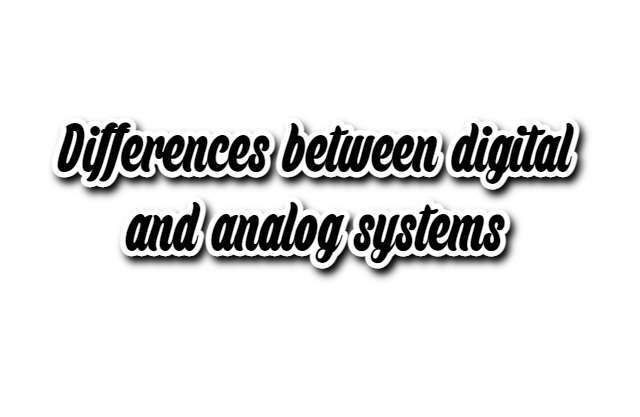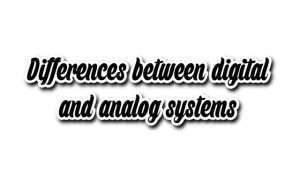Differences between digital and analog systems

Differences between digital and analog systems
Digital and analog are two different methods of representing and processing information.
Analog refers to a continuous signal that varies over time, such as a sound wave or an electrical signal. Analog devices use a physical quantity, such as voltage or current, to represent information. For example, a traditional clock with hands is an analog device because it represents the passage of time through the continuous movement of the hands.
Digital, on the other hand, refers to a discrete signal that is represented using numbers, such as a binary code. Digital devices use numbers to represent information, with each number corresponding to a specific value or state. For example, a digital clock uses a series of numbers to represent the time.
One key difference between analog and digital is that analog signals can be affected by noise and interference, which can degrade the quality of the signal. Digital signals, on the other hand, can be more resistant to noise and interference, as they use a series of discrete values that can be corrected using error-correction algorithms.
Another key difference is that digital devices can store and manipulate information more easily than analog devices. Digital devices can also process information more quickly and accurately than analog devices. However, analog devices can sometimes provide a more accurate representation of the natural world, such as in the case of music recordings, where analog recordings are often considered to have a warmer, more natural sound.

Key differences between digital and analog:
Digital:
- Information is stored and transmitted in binary code, consisting of 0s and 1s.
- The accuracy of digital signals is high as they can be amplified without distortion.
- Digital devices are more flexible in terms of storage capacity, editing, and copying.
- Digital devices are less affected by external interference or noise.
- Digital devices use less power and generate less heat compared to analog devices.
- Digital devices are programmable and can perform a wide range of functions using software.
Analog:
- Information is represented by continuously varying physical quantities, such as voltage, frequency, or amplitude.
- The accuracy of analog signals can degrade over time and distance, as they are subject to distortion and noise.
- Analog devices have a fixed storage capacity and are not easily editable or copied.
- Analog devices are more vulnerable to external interference or noise.
- Analog devices require more power and generate more heat compared to digital devices.
- Analog devices are less flexible and less programmable compared to digital devices.
Overall, the choice between digital and analog technologies depends on the specific needs of a given application. Digital technology is generally preferred for tasks that require high accuracy, flexibility, and programmability, while analog technology is preferred for tasks that involve continuous and natural processes, such as music and sound reproduction.




